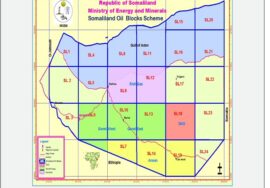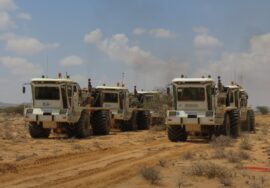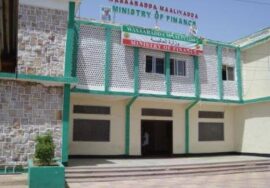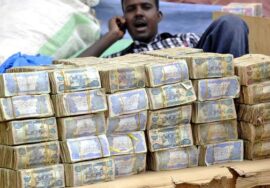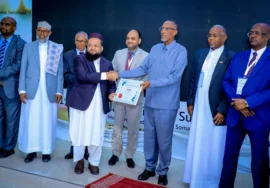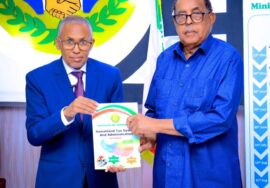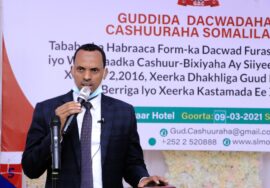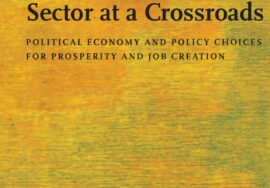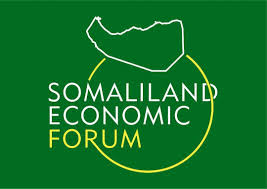
Economic Somaliland challenges from 1991-2025
Somaliland Experience overcoming challenges economy from 1991-2025
Introduction:
The formidable pride of the millennium Somali nomad mentality, extraordinary sense of superiority as an individual, and firm conviction that he is the sole master of his actions and subject to no authority except that of God.
May 1991, which led to the liberation of the Republic of Somaliland. All the national institutions were molded from zero, whether it is national armies, security forces, effective government institutions, its own currency, a police force as well as a national flag and a national anthem.
Since its liberation on 1991, Somaliland started with the lowest budget, Ismael Hurre Buba’a was the first finance minister of Somaliland (1991-1993), amid his tenure the Somaliland shilling was printed. He had also the legacy of reading and presenting the first budget of 250,000,000 shillings which is equivalent to $3.4million according to the current rate (Ismael Bubaa,2014).Mohamed HashiElmi (Eng), one of the five elites who founded the Somali National Movement (SNM) in London on April 6, 1981; a civil engineer, intellectual, Somalilander-patriotic, technocrat and dogmatic figure served as the Mayor of Hargeisa, the capital, Minister of Trade and Industry and Minister of Finance respectively.He has the legacy of being the best finance minister in the history of Somaliland, he had inherited from his predecessor Amb. Hussein Awil Ducaale a public debt amounted millions of dollars of which Mr.Hashi rejected to accept and claimed it was not lawful and he won’t inherit unless it has an official documentation and references.
Minister Hashi during his two years in the office cleared all the national debts, increased tremendously the national budget, replaced the old Somali shilling of Burco to the Somaliland currency which the previous administrations failed to replace, increased the salary of the civil servants and the national army 100%,implemented and financed free primary education, he has equipped the Hargeisa Group Hospital and changed all the hospital beds, serviced and maintained the dialysis machines of the national hospital to mention but a few.
Name of the Minister
1.Ismael HurreBuba 1991-1993
2.Abdullahi Mohamed Ducale 1993-1994
3.Ibrahim Abdi Muse 1994
4.Mohamed Ahmed Samatar(Ildab) 1994
5.Mohamed dhimbil galbeed 1994-1995
6.Cawil Haji Omer 1995
7.saleban Mohamed Adan(Saleban gal) 1996-1997
8.yusuf Ainab Muse 1996-1997
9.Ahmed Mohamed Mohamud silanyo 1997-1999
10.Mohamed Sacid Mohamed(Gees) 1999-2001
11.Hussein Farah Dodi 2001-2003
12.Hussein Ali Ducale(Cawil) 2003-2010
13.Mohamed Hashi Elmi 2010-2012
14.Abdulaziz Mohamed Samale 2012-2015
15.Zamzam Abdi Aden 2015-2017
- Saad Ali Shire 2017-2024
- Abdillaahi Awaale 2024 Up to Date
2.1. The Ministry of Finance as an Actor (Revenue Generation)
The ministry of finance came into being in 1991; previously it used to be the ministry of finance and budgeting. After Somaliland got its first president the late H.E. Abdurrahman Ahmed Aw Ali (Tuur) there were a lot of objections and challenges that the first government faced, mainly lack of funds and deficit of government budgets and national currency.
The country was using the Somali shilling which was the currency of the Republic of Somalia. Additionally, there was lack of income due to deficit in tax collection owing to the fact of the civil war and poor confidence of the de facto government and its citizen (Africa economic outlook 2015).
Likewise, there was no external aid from the international community and international financial institutions (Breton woods,2015), these were the stumbling blocks that the first administration of Somaliland faced, nonetheless the government commenced to impose small taxes to her citizens so that it can improve its income.
The ministry of finance failed to insert influence to the country’s economy and the market volatility since it doesn’t employ the fiscal policies that would have allowed it to have control on the economic changes. Poor financial literacy, professional personnel and expertise are common in Somaliland and in particular the ministry of finance as well as the central bank which are the two bodies that have the responsibility to control, evaluate and act as a watchdog over the financial sector and stimulate and impulse the economic growth of the country as well as control the inflation of the domestic currency.
The budget from1993 to 2017:
Year Budget in Slsh
1994 250,000,000
1995 1,996,623,580
1996 11,207,100,000
1997 36,108,606,940
1998 42,834,702,507
1999 55,916,304,333
2000 74,692,891,000
2001 78,026,000,000
2002 88,852,000,000
2003 101,687,066,649
2004 144,848,772,610
2005 148,252,211,709
2006 164,669,033,000
2007 202,759,848,704
2008 280,810,081,921
2009 265,190,140,732
2010 310,259,111,704
2011 529,935,322,246
2012 639,369,240,470
2013 750,000,000,000
2014 912,000,000,000
2015 1080,000,000,000
2016 1771,681,042,140
2017 2175.104,355,662
2018 $220 million USD
2019 $233 million USD
2020 $244 million USD
2021 $339 million USD
2022 $412 million USD
2023 $462.2 million USD
2024 $499.8 million USD
- The Central bank of Somaliland (Agent of regulation and control)
3.1 The central bank is dysfunctional, why?
- Absence of guiding policies and strategies
Founded in October, 1994, the Somaliland Central Bank serves as both a monetary authority and commercial bank. Despite possessing the label of a central bank, it doesn’t operate and have influence over the economy, it does not have the skeleton and the hierarchy that a central bank should possess and incorporate. The Central Bank, first introduced the Somaliland shillings followed by a unanimous approval by the cabinet ministers. The central bank formalized the design, symbols, nodes, and all its features and then proposed and approved at the parliament on June3rd1994.Subsequently, the central bank declared the bid and a British company named (Harrison and sons limited) wined and signed the contract of printing the new currency in 9th June,1994 with the new currency (Somaliland shillings) officially received on 12thJune,1994. The central bank had declared on 20th October, 1994, the replacement of the former Somali shillings and the official introduction of the Somaliland equivalent was accepted as a legal tender in Somalilandon 1st January,1995 (Shire 2009). It should be noted that the central bank didnot have the capital to finance the replacement of the new Somaliland currency and subsequently, it had signed a contract with a business man, the late Mr. Ibrahim Dhere, for the payment of the hard currency with MrDhere taking the replaced Somali shilling.
After a short period Harrison and Sons Company completed the issuance of the new currency, reaching Somaliland on 12th October, 1994. The quantities that had been issued were only 5 billionSh and in 20th October, 1994 declared its replacement. Fortunately, this heavy task was partially completed, with only three regions (Maroodi-Jeex, Awdal and Saaxil) having collected their previous currency replacing it with the new Somaliland shilling, whilst the remaining three regions continued to use the Somali shilling. The central bank mandate and its governance was stated and incorporated in to the constitution of Somaliland. It has a head office in Hargeisa in addition to seven other branches and four foreign exchange offices in the airports at Hargeisa, Berbera, Borama and Gabiley. Bank notes were issued with denominations of 5, 10, 20, 50, 100, 500, and 1,000 shillings with issued dates ranging from 1994 to 2011. Currently only the 500, 1000 and 5000 shilling notes are in circulation (CBS 2012).
For the first time, the Somaliland shilling was introduced to the market, the exchange rate was $100=5000 shillings, proving quite expensive and the two neighboring countries, Ethiopia and Djibouti argued that it was highly revaluated, in comparison to the $1=5000 of the Somali shilling exchange rate. Eventually, the Somaliland currency was losing value due to lack of control of the central bank and the excessive money printed and issued in to the economy. The Somaliland shillings depreciation reflects from the elimination and absence of coins and paper notes in circulation. The central bank provides exchange services for various currencies at the official government rate, but most people prefer the better, although, unofficial rates provided by the remittance agents and exchange brokers are found on the streets of the main cities. In November 2000, the official exchange rate of the Somaliland central bank was 4500 shillings for 1 US dollar. Unofficial exchange rates at that time fluctuated between 4000 to 5000 shillings per dollar, and in December 2008, the official exchange rate had fallen to 7500 shillings per US dollar.
Somaliland’s economy is highly dollarized leaving the central bank with no capacity to manage the national currency, neither monetary stock consisting exclusively of cash, little room for monetary policy since there are neither commercial banking systems nor a stock of government securities or currency. Money transfer businesses and mobile money system facilitate payment in Somaliland; these transactions do not create credit which promotes economic growth(Somalia economic update 2015). Normally, the central and federal banks keep in their accounts foreign reserve money which is equivalent to or exceeds four months of the country’s imports and unfortunately Somaliland has the only central bank in the world which has zero foreign reserves. However, thanks to the diaspora and the remittance firms who saved the country’s reserve money since millions of dollars are coming into the country which will balance the billions of dollars which are going out to off shores. Remittances comprise of 25%-40% of GDP (IMF, 2015).Remittance companies have not only served to help the impoverished majority receive money from the diaspora but they have also managed to provide some financial services to the population. Additionally, remittance companies offer several other services including, savings accounts, small credit, and a method for paying aid agencies.
Lacking a legal and regulatory banking structure, a central bank, and access to sufficient credit, the extinction of money transfer companies will hinder the already minor investments and reconstruction projects in the region, while exacerbating the percentage of the population living under the poverty line(Africa economic outlook 2016).
Lacking a legitimate banking sector and postal system, companies have been forced to set up headquarters in neighboring countries, thus raising the cost of doing business. Additionally, without international status, the government cannot receive bilateral assistance and development agencies cannot offer loans, complicating investment and commercial activities within Somaliland. Given its current threshold due to unofficial statehood, political stability and economic gains cannot be sustained for much longer (USAID 2014).
- Lack of Accessibility to debt
Somaliland can’t borrow a loan from the international tribunals, this has thwarted the economic development of the country, as it can only use it’s income to regulate the economy, Somaliland, though, unrecognized it’s the only country in the world which has zero debt whether its’ from the international tribunals, domestic borrowing as well as the offshore lenders.
- Identifying the economic challenges and obstacles
4.1 Absence of strong institutions
Somaliland suffers from severely low level of investment due to fragile conventional/Islamic financial system. Lack of financial intermediation in Somaliland has constrained business growth as businesses are forced to use their own funds or borrow from friends or family members to expand. The lack of credit facilities perpetuates elite capture, as people with resources or access to resources remain in a better position to invest and most upcoming business owners use their own funds or borrow from friends and family, or rely on remittances for investment funds. Access to finance is a major binding constrain to growth for small and medium size enterprises in Somaliland with less connected businesses and businesses owned by women at a particular disadvantage (World Bank,2013).
Financial institutions are the milestone of each and every country’s economy as they contribute to the gross domestic product (GDP) of the nations, creation of employment opportunities for the youth and the community at large, they also contribute to the economic infrastructure. There are a lot of objections and challenges that are facing the Somaliland economy at large mainly lack of financial institutions and strong central bank and subsequently the money transfer institutions (MTBs) get that advantage and serve as financial institutions in Somaliland, although they don’t provide the services that banks deliver. Money transfer or hawalas process transactions and payments only between people within their networks and basically using Hawalas to transfer large amount of funds is expensive because unlike banks which charge a fixed fee, Hawala’s fees are a percentage of the value transferred amount (World Bank Somalia economic update 2015).
Consequently, they are a threat to the country’s economy, owing to the fact that there is no strong central bank which can control the deposits, that money transfer service providers are accepting from the citizens. The central bank can’t even secure the deposits of the customers since there is no reserve money and working capital requirements that the central bank provides from these institutions (De cock, South African economist).
There is a group of exchange brokers who have the total control of the market exchange without the regulations of any regulatory body; from time to time the central bank negotiates with these brokers to support it in order to control the money in the economy and exchange fluctuations and this will definitely make the central bank of Somaliland the poorest central bank in the developing world.
4.2. Awol of Global Recognition
Lacking international recognition, Somaliland’s future remains uncertain, considering that recognition allows entry into multilateral and bilateral Trade agreements and dramatically bolsters access to foreign aid and incorporates territory into international legal frameworks that make it easier to secure foreign Investment (Milhalkanian (2004); Caspersen 2012: 40-45). In their most direct form– loans and foreign aid – these benefits are referred to as “rents to sovereignty”. Collier and Hoeffler (2005).Most unrecognized states are low income countries and the costs of non-recognition grow over time as their economies further decay because the resources of unrecognized state governments are primarily focused on security and such states are generally characterized by a lack of public investment in infrastructure and education.
They also face severe brain drain and lack of private investment caused by the absence of security and restrictions on trade, Instability in the border region and the diversion of military resources to monitor the de facto border are costly as this is maintenance of economic sanctions against the unrecognized state thus foreign investors may be more worried of investing in states that do not effectively control their own territory and there are diplomatic costs as well (Caspersen 2012: 40-45).
4.3 Poor infrastructure
Poor infrastructure normally slows down the economic development; the provision of infrastructure services to meet the demands of businesses, households and other users was one of the major challenges of economic development. Infrastructure services also contribute to improved productivity of business, households and government services. The time spent obtaining water and fuel or traveling to markets and service centers is often significant. When household connections are available and transport and telecommunications services are accessible, household members, particularly women and children, can engage in more productive activities. The expansion in quantity and improvement in quality of infrastructure services also lowers costs and expands market opportunities for businesses. This contributes to increased investment and productivity which is essential for sustaining economic growth (IMFcountry Report 2015).
4.4 High cost of lighting and energy
Energy plays a fundamental role in the economic growth process; Stern (2010) argues that energy plays an important role in economic growth as production should be seen as a function of capital, labour and energy. Traditionally it is only seen as a function of capital and labour. However, energy is required to power industrial processes and to produce goods, equipment and services in the majority of productive sectors within an economy. The provision of energy is also strongly associated with improved human development (Bergasse et al., 2013) Atif & Siddiqi (2010) examine the link between electricity consumption and GDP, the study finds that an increase in the use of electricity leads to an increase in economic growth. Therefore, the research suggests that the slowdown in electricity consumption within the country has hindered economic growth and the study finds that there is no long-term link from energy consumption to GDP but there are some significant short-term links from energy consumption to GDP. There are also long-term links from GDP growth to energy consumption.
4.5 Dearth of the foreign direct investment (FDI)
Somaliland has very low levels of investment, ranked approximately 180th in the World for gross fixed capital formation as a percentage of GDP. Foreign Direct Investment (FDI)is where a company from one country making a physical investment into building a factory in another country, (FDI) plays an extraordinary and growing role in global business. It provides countries with new markets and marketing channels, cheaper production facilities, access to new technology, products, skills and financing. For a host country or the foreign firm which receives the investment it can provide a source of new technologies, capital, processes, products, organizational technologies and management skills and as such can provide a strong impetus to economic development. Unlike other African governments who get millions from the offshore investors, Somaliland does not receive any form of foreign direct investment except very little portion by the virtue of lack of recognition, poor financial infrastructure and business environment, difficult of doing business to mention a few. Since there are no insurance firms in Somaliland no company can risk it’s capital to invest in this young and fragile nation (world Bank).
4.6 High level of youth unemployment
The last assessment of the unemployment rate in Somaliland indicates among others, a high rate of unemployment, high level of illiteracy, poor government policies/ strategies and undeveloped economy are fueling unemployment in Somaliland. Additionally, brain drain is also characterized with professionals going abroad to earn a living. I believe the last assessment needs to be revised to shed more light on the underlining issues that cause unemployment. e.ghegemony and favoritism, Somaliland has very low employment to population ratios, with 28% for males and 17% for females (15-24-year old’s in Borama, Hargeisa and Burao (World Bank).
4.7 Somaliland’s economy remains highly dollarized, leaving the central bank with no capacity to manage the national currency.
All major transactions in Somaliland are undertaken in US dollars, the monetary authorities can’t directly affect the volume of the foreign currency in circulation, if there is little or no bank credit outstanding, they cannot influence interest rates which affect the money supply by changing bank reserve requirements.
4.8 The economy highly dependent on imports
Somaliland’s GDP for 2012 is estimated to have been $1.4 billion (current US$ prices)[1], with GDP per capita estimated at $347.Almost 30% of GDP is derived from the livestock industry followed by 20% from wholesale and retail trade (including the informal sector); 8% from crops and 6% from real estate activities. In 2012, Somaliland’s trade deficit was approximately $496 million, which was financed through a combination of remittances and external aid.
- Conclusion and Recommendations
Somaliland needs drastic economic reforms, particularly passing central bank act reforms, and the formation of monetary and fiscal policy committees. These will set guidelines that will enable the central bank and the Ministry of Finance to act as a watchdog of market volatility. The government should come up with strategies and policies that will strengthen the Somaliland shilling and persuade citizens to use their local money for their transactions. It is also obliged, to educate people on the significance and importance of financial literacy and saving and depositing their surpluses in financial institutions and not put under mattresses. This will eventually improve investment opportunities and allow investors, households, small and medium entrepreneurs (SME’S) to get advance loans from financial institutions. This will significantly enhance the economy, create job opportunities and increase government income. It will also assist the government to determine the amount of money in circulation and thus enable control of the economic volatility.
The government needs to increase its income by improving tax collection techniques, setting zero tolerance policy for graft, improving the skills and knowledge of the civil servants and giving incentives that enhances the efficiency and effectiveness of revenue collection and its services employing technology and computerized systems i.e. Management information systems (MIS) and public financial management systems (PFMS). Moreover, there is a need to form Somaliland Revenue Authority (SRA) which will particularly deal with collecting tax for the government.
To reduce the widespread youth unemployment, the government should take various measures to tackle this issue by most importantly establishing Technical and Vocational Education and Training Institutes (TVET) which will at the end of day, produce graduates who are equipped with the skills needed in the job market thereby reducing the unemployment which is hostile to economic development. A World Bank supported study shows the East Asian countries such as China, South Korea and Malaysia all achieved their industrialization because they invested heavily in vocational training, attaining a 50 percent enrolment compared to other disciplines. Additionally, the ruling administration should institute saving and credit cooperative societies (SACCOS) which will make a platform where the deficit and surplus holding investors meet, thus creating a space for the young graduates and improving the economy at large.



